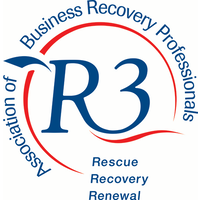A West of England insolvency expert is calling on Swindon’s bosses to make use of the final month of the government’s furlough scheme to plan for the future.
Philip Winterborne, who chairs insolvency and restructuring trade body R3 in South West, says directors should review their businesses over the next four weeks and seek advice about the options open to them to address any impending financial issues. 
Philip, pictured, who is a partner at Bristol law firm Temple Bright, said: “Directors have another 30 days when the government will effectively underwrite a large percentage of their wage bill, and they need to use this time to identify any financial issues their business may face and explore their options for resolving them.
“It’s very hard to admit your business is struggling. But starting the conversation as early as possible will mean you have more potential solutions open to you, and more time to make a decision about how you move forward
“The most critical thing company directors need to be aware of are signs their business is in distress, and not to ignore them if they present themselves.”
Signs of business distress include problems paying wages or suppliers on time, or other cashflow-related issues.
Philip added: “The directors of any business experiencing any of these should seek advice from a qualified source about how to resolve the situation. 
“Solutions can often be as simple as refinancing or consolidating the company’s debt.
“But it is critical is that these options are explored before the issue spirals into something much more serious.”
The pandemic disrupted trading for nearly a year and a half and forced around 1.6m businesses to borrow more than £79bn from the government – and at the peak of the pandemic furlough nearly 9m staff.
Latest figures from HM Treasury published at the end of July showed 1.9m people remained on furlough, with the scheme due to end on September 30.
R3 has developed a free guide for company directors which explains the common signs of business distress and the full range of restructuring and insolvency options that are available to businesses that are experiencing it.
“These are far from normal times. We know there are many directors who are worried about the future and unsure what to do if their business is struggling,” added Philip.
“We hope they will use this guide to get a clearer understanding of the warning signs, what they can do to turn it around, and where they can get the help they need to do it.”
To download a copy of R3’s guide, visit www.backtobusinessuk.com














